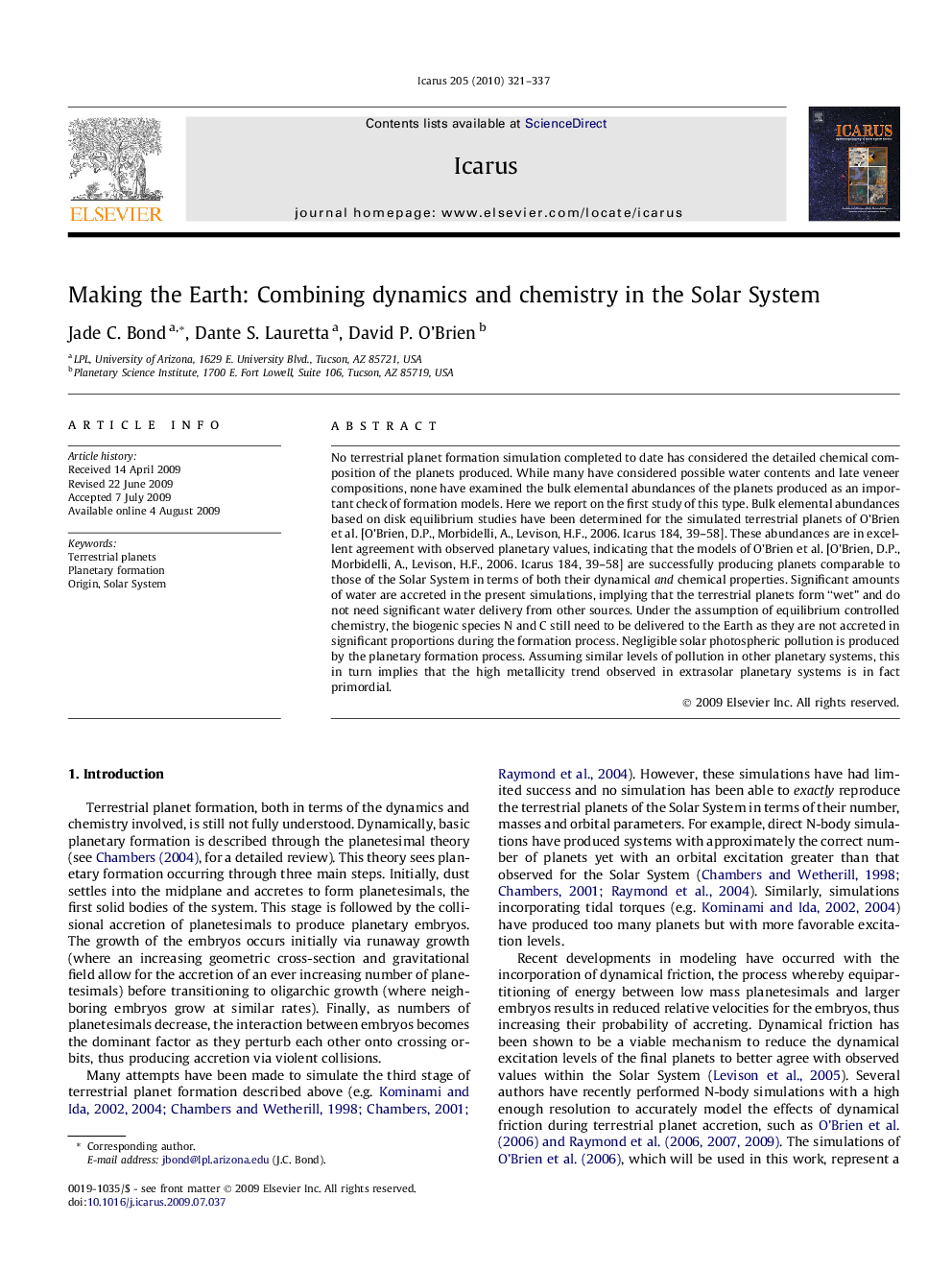| Article ID | Journal | Published Year | Pages | File Type |
|---|---|---|---|---|
| 1774222 | Icarus | 2010 | 17 Pages |
No terrestrial planet formation simulation completed to date has considered the detailed chemical composition of the planets produced. While many have considered possible water contents and late veneer compositions, none have examined the bulk elemental abundances of the planets produced as an important check of formation models. Here we report on the first study of this type. Bulk elemental abundances based on disk equilibrium studies have been determined for the simulated terrestrial planets of O’Brien et al. [O’Brien, D.P., Morbidelli, A., Levison, H.F., 2006. Icarus 184, 39–58]. These abundances are in excellent agreement with observed planetary values, indicating that the models of O’Brien et al. [O’Brien, D.P., Morbidelli, A., Levison, H.F., 2006. Icarus 184, 39–58] are successfully producing planets comparable to those of the Solar System in terms of both their dynamical and chemical properties. Significant amounts of water are accreted in the present simulations, implying that the terrestrial planets form “wet” and do not need significant water delivery from other sources. Under the assumption of equilibrium controlled chemistry, the biogenic species N and C still need to be delivered to the Earth as they are not accreted in significant proportions during the formation process. Negligible solar photospheric pollution is produced by the planetary formation process. Assuming similar levels of pollution in other planetary systems, this in turn implies that the high metallicity trend observed in extrasolar planetary systems is in fact primordial.
